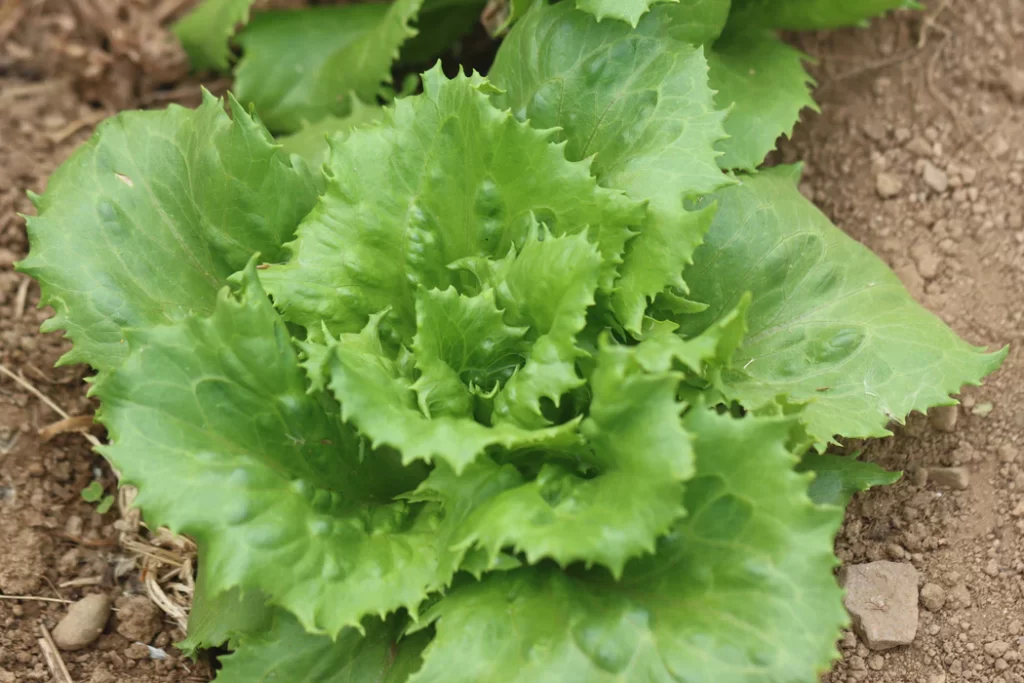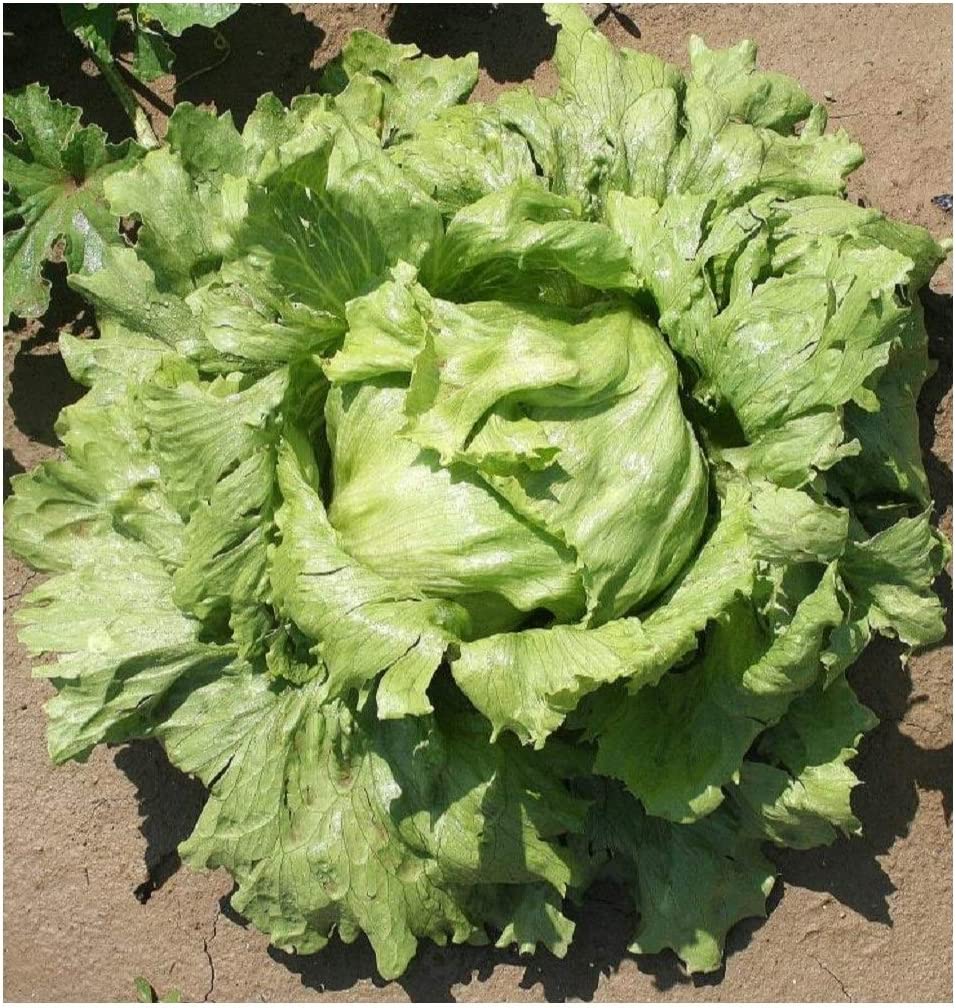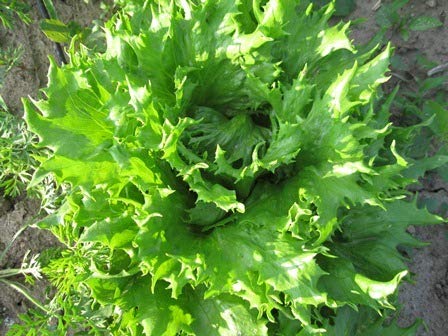Do you want to grow a versatile and delicious leafy green that is becoming increasingly popular among home gardeners and farmers alike?
Then why don’t you grow ice queen lettuce?
The Ice queen lettuce is a cool season crop that is prized for its crisp and tender leaves, along with its sweet and refreshing flavor.
With a little care and attention, anyone can grow and care for Ice Queen lettuce in their own garden, regardless of their level of gardening experience.
So let’s dive into the article below on how to grow and care for this ice queen lettuce.
Brief overview of Ice Queen Lettuce
Ice Queen lettuce is a type of lettuce that is known for its crisp texture and sweet flavor. It is a member of the Asteraceae family and is scientifically known as Lactuca sativa.
This lettuce is a popular variety for salads and is prized for its delicate, tender leaves that are blue-green in color. Ice Queen lettuce is relatively easy to grow, and is well-suited to cooler climates.
It is a slow-bolting variety, meaning that it takes a longer time to produce flowers and seeds, making it a good choice for gardeners who want a longer harvest period.
The plant grows to a height of about 8 to 10 inches and has a spread of around 12 inches. It is a cool-season crop, meaning that it is best grown in spring and fall when temperatures are cooler.
Importance of growing and caring for Ice Queen Lettuce

Lettuce is a nutritious vegetable that is low in calories and high in vitamins and minerals, such as Vitamin C, Vitamin K, and folate. By growing your own Ice Queen lettuce, you can ensure that you have access to fresh, nutrient-dense greens year-round.
Growing your own food, especially in a home garden, is a sustainable practice that reduces your carbon footprint and helps to conserve resources.
By having a supply of Ice Queen lettuce readily available in your garden, you can quickly and easily add fresh greens to your meals, without having to make a trip to the store.
Where to plant ice queen lettuce?
Ice Queen lettuce can be grown in a variety of locations, including gardens, containers, raised beds, and even in a greenhouse or high tunnel. When choosing a location to plant your Ice Queen lettuce, it’s important to consider several factors, including light, temperature, and soil quality.
How to plant ice queen lettuce?
Here’s how to plant Ice Queen lettuce:
Prepare the soil:
Before planting, prepare the soil by tilling it to a depth of about 12 inches. Mix in compost or well-rotted manure to improve the soil quality. If necessary, adjust the pH of the soil to between 6.0 and 7.0 by adding lime or sulfur.
Sow the seeds:
Sow the Ice Queen lettuce seeds directly in the garden, about 1/4 inch deep and 6 to 8 inches apart. Water the soil immediately after planting to ensure that the seeds make good contact with the soil.
Water and fertilize:
Keep the soil consistently moist by watering regularly, especially during dry spells. Fertilize the plants every 2-3 weeks with a balanced, water-soluble fertilizer, following the manufacturer’s instructions.
Thin the seedlings:
When the seedlings are about 2-3 inches tall, thin them out so that they are 6 to 8 inches apart. This will allow each plant to have enough room to grow and spread.
How to care for ice queen lettuce?

Soil
Ice Queen lettuce requires well-drained soil in order to grow properly. If the soil is too heavy or poorly drained, it can cause the roots to rot. To improve the drainage of heavy soils, mix in sand or compost to increase porosity.
Ice Queen lettuce prefers soil that is rich in organic matter, such as compost or well-rotted manure. Adding these organic materials to the soil helps to improve fertility, retain moisture, and provide a source of nutrients for the plants.
The ideal soil pH for Ice Queen lettuce is between 6.0 and 7.0. You can have your soil tested to determine the pH, and adjust it as necessary by adding lime or sulfur.
Light
In terms of light requirements, Ice Queen lettuce does best in full sun to partial shade conditions. This means that it should receive at least 6 hours of direct sunlight per day, but it can also tolerate some shade during the hottest parts of the day.
If grown in too little light, the lettuce will become leggy and bolt (go to seed) quickly. If grown in too much light, the leaves can become bitter and tough.
It’s important to monitor the light conditions in your growing area and adjust as necessary to ensure the best growth and flavor for your Ice Queen lettuce.
Temperature
Ice Queen lettuce is a cool-season crop and prefers to grow in cooler temperatures. It is most comfortable in temperatures ranging from 60°F to 70°F (15°C to 21°C). If temperatures exceed this range for an extended period of time, the lettuce can become stressed and may bolt (go to seed) prematurely.
During the hottest parts of the summer, it is important to provide shade for your Ice Queen lettuce plants to keep them from getting too hot. If you live in a warm climate, you may have better success growing Ice Queen lettuce in the cooler months of fall and winter, or in a greenhouse with temperature control.
It’s important to monitor the temperature in your growing area and adjust as necessary to ensure the best growth and flavor for your Ice Queen lettuce.
Humidity
Ice Queen lettuce is a delicate plant and does not tolerate high humidity well. It is best grown in a relatively low-humidity environment. High humidity can cause the leaves to become soft and develop fungal diseases, such as powdery mildew.
To maintain proper humidity levels for Ice Queen lettuce, it is important to provide good air circulation around the plants. This can be done by spacing the plants far enough apart to allow for air to flow between them, and by avoiding overcrowding the plants. It’s also helpful to avoid watering the leaves directly, as this can increase the humidity levels around the plants.
In general, Ice Queen lettuce prefers a relative humidity of around 50% or less. If you live in a high-humidity area, you may need to take extra steps to maintain the proper humidity levels for your plants, such as using a dehumidifier or providing additional ventilation.
It’s important to monitor the humidity in your growing area and adjust as necessary to ensure the best growth and health for your Ice Queen lettuce.
Fertilizer
Ice Queen lettuce is a relatively fast-growing crop that benefits from regular fertilization. To ensure healthy growth and a good yield, it’s important to provide the right nutrients at the right time.
Ice Queen lettuce is a light feeder and does not require a lot of fertilizer. A balanced, all-purpose fertilizer, such as a 10-10-10 formula, can be used to provide the essential nutrients that the plants need to grow. A slow-release granular fertilizer is a good choice for a low-maintenance option, or you can use a water-soluble fertilizer and apply it every 2 to 3 weeks.
It’s important to follow the manufacturer’s recommendations for application rates, as too much fertilizer can lead to excessive growth and flavor problems. It’s also a good idea to have your soil tested to determine if any specific nutrient deficiencies need to be corrected.
In addition to fertilizer, it’s important to ensure that the soil remains moist but not waterlogged, as this can lead to root rot. If necessary, you can mulch the soil to help retain moisture.
Overall, providing adequate fertility and maintaining proper soil moisture levels will help ensure that your Ice Queen lettuce plants grow healthy and produce a good yield.
Pest control
Ice Queen lettuce is susceptible to a variety of pests, just like many other vegetable crops. Some common pests that can affect Ice Queen lettuce include aphids, slugs, snails, caterpillars, and leafhoppers.
The best way to control pests is to take a preventative approach, by providing the best growing conditions for your plants and keeping the area around the plants clean and free of debris. Regularly inspecting your plants for signs of pests can help you catch infestations early and take action before they become a major problem.
If pests do become a problem, there are several methods of control that you can use, including:
Cultural controls:
Providing proper care, such as adequate water, fertilizer, and light, can help your plants to stay healthy and better able to resist pests.
Physical controls:
Handpicking pests off the plants and removing infected leaves can help reduce pest populations.
Biological controls:
Beneficial insects, such as ladybugs and lacewings, can help control pest populations. You can purchase these insects from garden centers or online.
Chemical controls:
If necessary, you can use approved pesticides to control pests. It’s important to follow the label instructions and to use the least toxic option that will effectively control the pests.
In general, it’s best to use a combination of control methods for the best results. And, it’s important to monitor your plants regularly to ensure that any pest problems are caught and addressed promptly.
How to yield better Ice Queen Lettuce?

Here are a few things you can do to promote healthy growth and increase the yield of your Ice Queen lettuce plants:
- Remove yellow or damaged leaves: Remove any yellow or damaged leaves regularly to prevent the spread of disease and to encourage the plant to put its energy into growing new leaves.
- Thin plants: If you have overcrowded plants, thin them by removing some of the plants to allow for proper air circulation and to prevent disease.
- Pinch back: If you want to encourage bushier growth, you can pinch back the tips of the plants. This will encourage branching and the production of new leaves.
- Harvest regularly: Regular harvesting of mature leaves can encourage the plant to produce new growth and increase the yield.
Remember, when pruning or harvesting your Ice Queen lettuce plants, handle them gently to avoid damaging the delicate leaves. Pruning is not necessary for the success of Ice Queen lettuce, but following these simple tips can help you maximize your yield and grow healthy plants.
Conclusion
Ice Queen lettuce is a delicious and easy-to-grow crop that is well worth adding to your home garden. With just a little care and attention, you can enjoy a bountiful harvest of crisp and tender leaves that are perfect.
You may also like to read
A Beginner’s Guide to Fiddle Leaf Fig: From Planting to Pruning
Bringing Life to Your Landscape: How to Grow and Care for a Flowering Dogwood Tree






